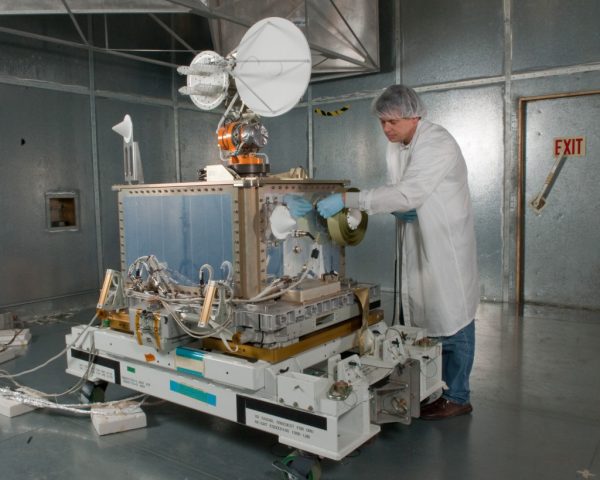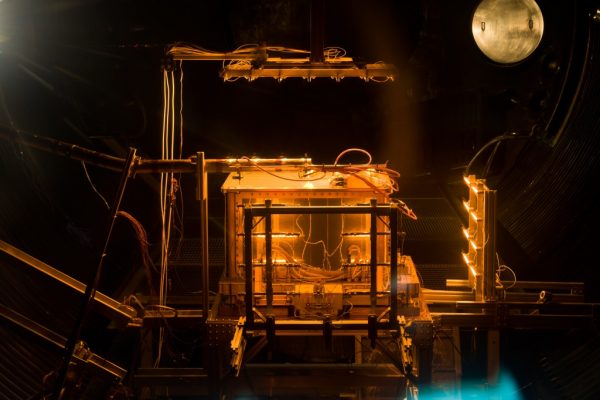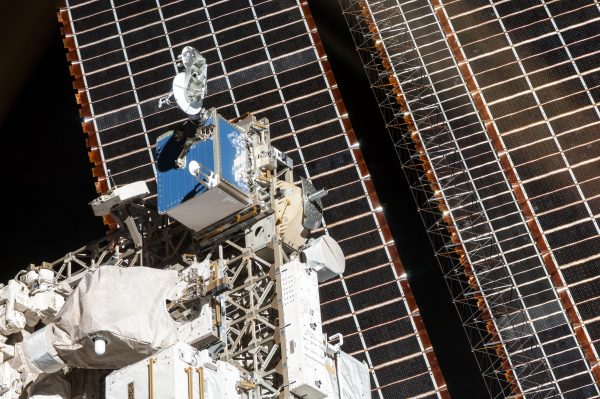SCaN Test Bed
Space Communications and Navigations (SCaN) Testbed
Launched on July 20, 2012, on a Japanese H-IIB Transfer Vehicle, the Space Communications and Navigation (SCaN) Testbed was installed on the International Space Station to provide an on-orbit, adaptable software-defined radio (SDR) facility with corresponding ground and operational systems. The SCaN Testbed (STB) led groundbreaking efforts to champion use of software defined radios for space communications.
During its seven years on the International Space Station, STB was able to demonstrate routine reconfiguration of radios in space 888 times, challenging the perception that even a single reconfiguration was a significant mission risk. The testbed successfully established the first Ka-band full duplex space transceiver, which is now a R&D 100 award winning technology and a successful commercial product line. This enabled STB to validate Ka-band performance of NASA’s TDRS satellites K, L, and M, as well as test many communication system upgrades on the ground for projects such as User Service Subsystem Component Replacement (USS-CR) and Space Network Ground Segment Sustainment (SGSS). STB also developed and contributed 6 radio waveforms, or reusable software components, to the Space Telecommunications Radio System (STRS) repository, allowing future missions seamless reuse of prior software investments.
SCaN Testbed paved the way for many firsts in communications and navigation technology. It was the first to receive the Global Positioning System (GPS) Civil Navigation Message (CNAV) in space in June 2013. In 2018, STB became the first in-space user of the European Galileo E5A navigation signal, demonstrating the capability for merging Galileo and GPS to precisely determine orbits of spacecraft. The Testbed performed revolutionary study into cognitive communication techniques in 2015, demonstrating the ability for real-time adaptive link control; in 2018, it performed the first-ever demonstration of an adaptive space link controlled entirely by an artificial intelligence algorithm. These experiments enabled demonstrations of automatic communication service scheduling, or User Initiated Service, which allowed STB to request high-rate communications services in near real time, a significant improvement over the prior 3+ week turnaround time.
2019 Decommissioning
After seven successful years and more than 4,200 hours of testing, NASA’s SCaN Testbed was decommissioned June 3 as it burned up in the trunk of SpaceX CRS-17 upon reentry into Earth’s atmosphere. STB’s accomplishments have increased the trust that missions place in software defined radio technology, and demonstrated multiple mission use cases for the benefits of radio reconfiguration in space.
The testbed also provided valuable insights that NASA’s Cognitive Communications Project will use to increase a respective mission’s capabilities and a communications system’s resiliency by merging SDR technology with machine learning, networking and automation.




